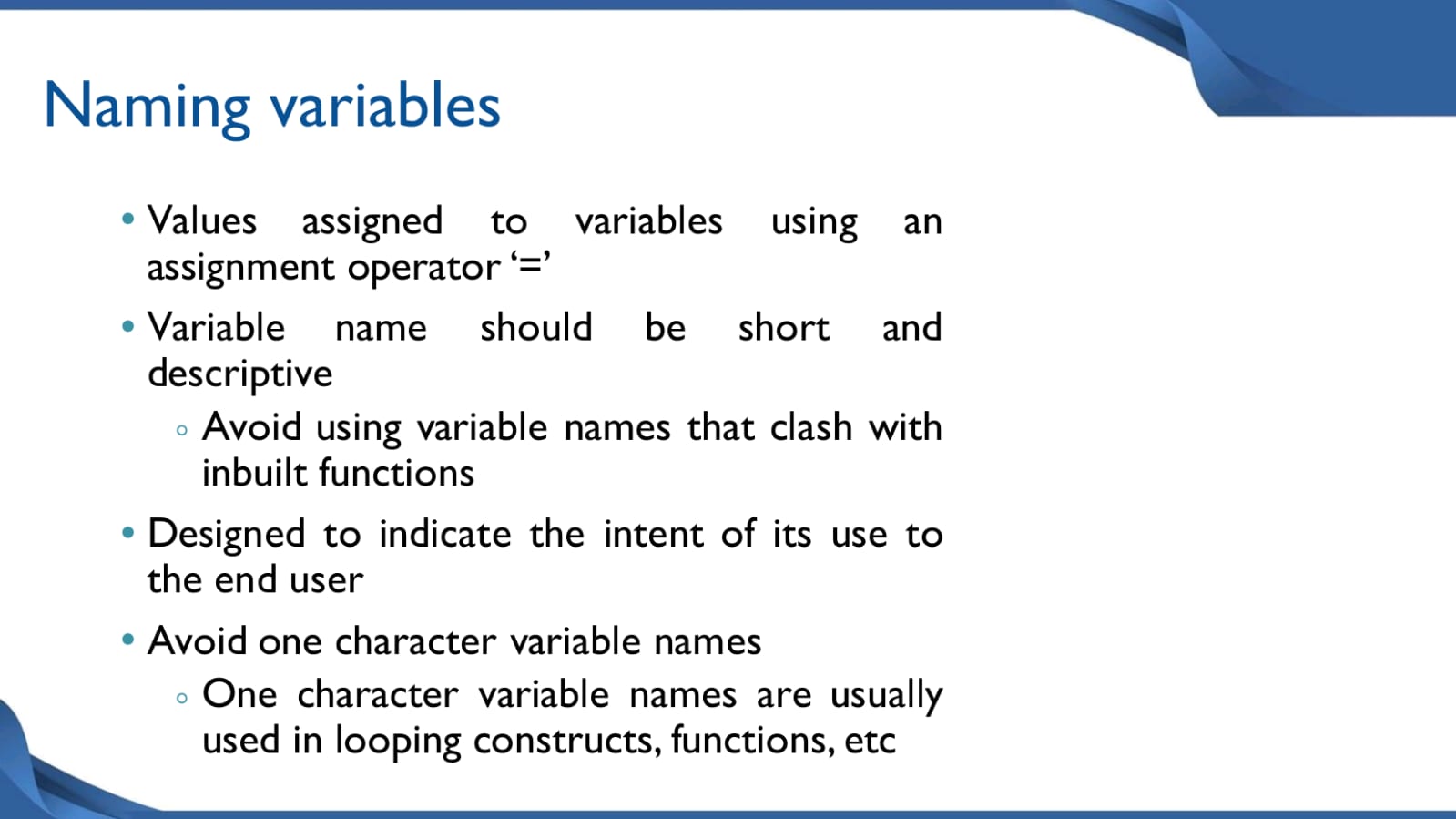
Monday, 11 October 2021
Saturday, 9 October 2021
Wednesday, 6 October 2021
Tuesday, 5 October 2021
Introduction to Python for Data Science
Author October 05, 2021 Python No comments

What is Data Science?Data Science is the art of analyzing using statistics and machine learning techniques raw data with a perspective of drawing valuable insight from it.Data Science is used in many industries to allow them to make better...
Operations On Dataframe in Python [Part II]
Author October 05, 2021 Projects, Python No comments

Concise summary of Dataframe.So, next we are going to see about how to get the concise summary of DataFrame.So,
there is a command called info that returns a concise summary of a DataFrame, the
concise summary includes the data type of index;...
Operations On Dataframe in Python
Author October 05, 2021 Pandas, Python No comments

Checking data types of each Column in a Data Frame.If you want to check the data type of each column, because
whenever you have been given a data, you want to really check what is the structure of
the data; that means, which variable has...
Wifi Password Generator in Python
Author October 05, 2021 Projects, Python No comments

WIFI PASSWORD EJECTORDescriptiona simple python script that tells you the password of the wifi you're connected withRequirementsjust need to install python in your system.Source Code:- import subprocessdata = ( subprocess.check_output(["netsh",...
Monday, 4 October 2021
Python Project [ Age_Calculator]
Author October 04, 2021 Projects, Python No comments

Calculate Your Age!This script prints your age in three different ways :YearsMonthsDaysPrerequisitesYou only need Python to run this script. You can visit here to download Python.Input:import timefrom calendar import isleap# judge...
Python Project [Whatsapp Bot]
Author October 04, 2021 Projects, Python No comments

Whatsapp BotPerform Operation likePut your detailsconnect with internetPass your messageInput:import pywhatkitfrom datetime import datetimenow = datetime.now()chour = now.strftime("%H")mobile = input('Enter Mobile No of Receiver : ')message...
Python Project [ Digital Clock]
Author October 04, 2021 Projects, Python No comments

This script create a digital clock as per the system's current time.Input:import tkinter as tkfrom time import strftime
def light_theme(): frame = tk.Frame(root, bg="white") frame.place(relx=0.1, rely=0.1, relwidth=0.8, relheight=0.8)...
Popular Posts
-
In a world increasingly shaped by data, the demand for professionals who can make sense of it has never been higher. Businesses, governmen...
-
Let's break down the code step by step: marks = 75 This line assigns the value 75 to the variable marks. It represents a student'...
-
Python code line by line: import array as arr This imports Python's built-in array module and gives it the alias arr. The array...
-
Let me explain this code: num = 1 while num < 6: print(num) This code has a few issues that would cause it to run indefinitely (inf...
-
Explanation: lambda a, b: a + b + 1 is an anonymous function that takes two inputs, a and b. It returns the result of a + b + 1. No...
-
Step-by-Step Explanation: x = set([1, 2, 3]) Creates a set x with elements: {1, 2, 3} y = set([3, 4, 5]) Creates a set y with eleme...
-
Let's break down this Python for loop: for i in range ( 0 , - 2 , - 2 ): print(i) range(start, stop, step) parameters: start =...
-
What you'll learn Describe what data science and machine learning are, their applications & use cases, and various types of tasks ...
-
Learn Quantum Computing with Python and IBM Quantum Quantum computing is revolutionizing the way we approach complex problem-solving, offe...
-
Fundamentals of Digital Image and Video Processing In today's visually-driven world, digital images and videos are everywhere—from the...
Categories
100 Python Programs for Beginner
(111)
AI
(41)
Android
(24)
AngularJS
(1)
Api
(2)
Assembly Language
(2)
aws
(17)
Azure
(7)
BI
(10)
book
(4)
Books
(200)
C
(77)
C#
(12)
C++
(83)
Course
(67)
Coursera
(253)
Cybersecurity
(25)
Data Analysis
(3)
Data Analytics
(4)
data management
(11)
Data Science
(149)
Data Strucures
(8)
Deep Learning
(21)
Django
(16)
Downloads
(3)
edx
(2)
Engineering
(14)
Euron
(29)
Events
(6)
Excel
(13)
Factorial
(1)
Finance
(6)
flask
(3)
flutter
(1)
FPL
(17)
Generative AI
(11)
Google
(38)
Hadoop
(3)
HTML Quiz
(1)
HTML&CSS
(47)
IBM
(30)
IoT
(1)
IS
(25)
Java
(93)
Java quiz
(1)
Leet Code
(4)
Machine Learning
(86)
Meta
(22)
MICHIGAN
(5)
microsoft
(4)
Nvidia
(4)
Pandas
(4)
PHP
(20)
Projects
(29)
pyth
(1)
Python
(1067)
Python Coding Challenge
(465)
Python Quiz
(138)
Python Tips
(5)
Questions
(2)
R
(70)
React
(6)
Scripting
(3)
security
(3)
Selenium Webdriver
(4)
Software
(17)
SQL
(42)
UX Research
(1)
web application
(8)
Web development
(4)
web scraping
(2)






.png)











.jpg)






.png)



















